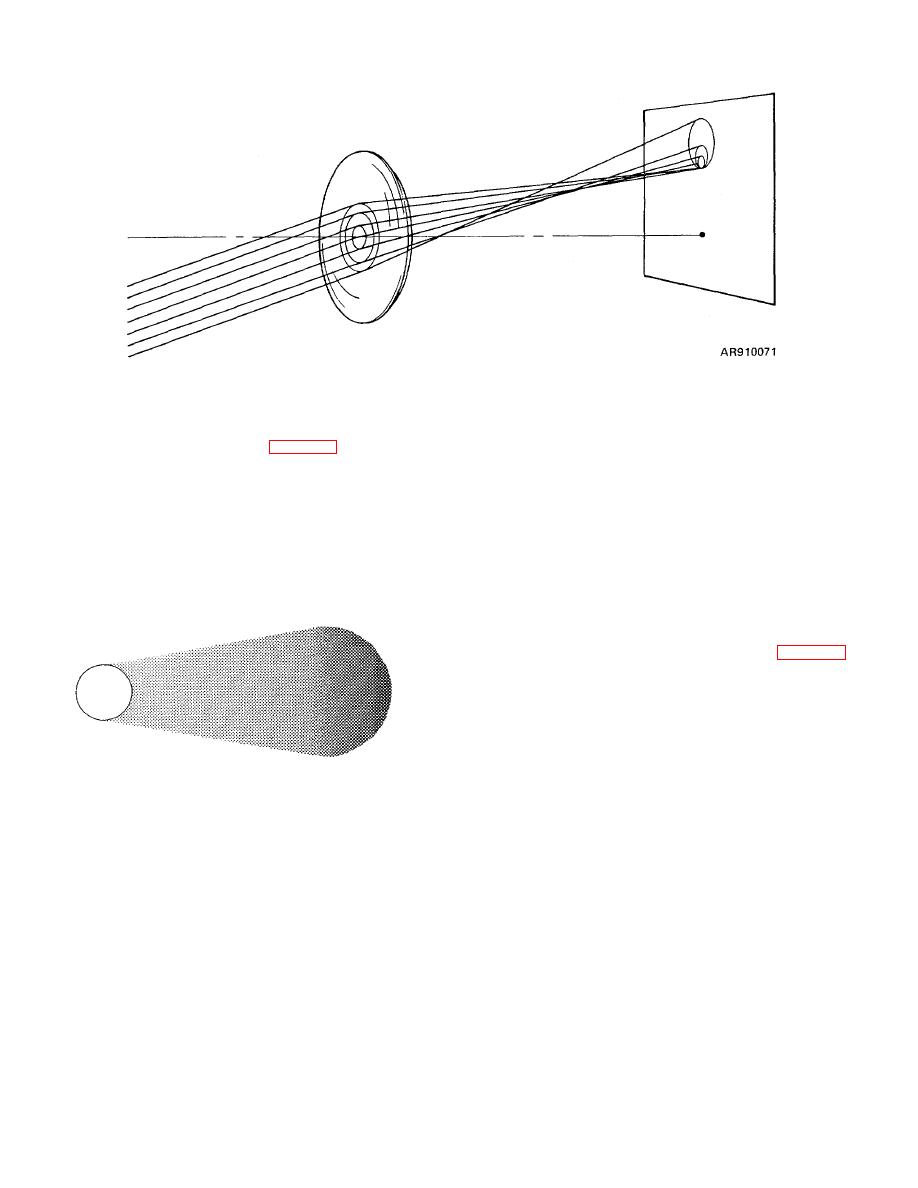 |
|||
|
|
|||
|
|
|||
| ||||||||||
|
|
 TM 9-258
Figure 2-65. Coma
d. The total image of the point offset from the axis
e. In producting compound lenses the several
types of glass and the curves of the various faces are
may be any of a wide variety of patterns, an egg-1, pear-,
carefully chosen to give approximate correction for coma
coma-, or comet-shaped blur (fig 2-66). Its general
as well as for other aberrations. Aplantics are lenses
appearance of a comet gives it the name of coma.
corrected for spherical, coma and chromatic aberration.
When viewed under a microscope, a point of light
influenced by coma may have a very fantastic shape due
2-42. Curvature of Image and Distortion.
to its being affected at one time by all types of
a. Definition of Distortion. Distortion is a form of
aberrations. Inasmuch as coma causes portions of
spherical aberration in which the relative location of the
points of light to overlap others, the result is blurred
images of different points of the object is incorrect.
images of objects in the portion of the field affected by
When imaged by a lens having this defect, a straight line
coma.
extending across the field is curved. This is a serious
defect in instruments of high magnifying power because
the amount of distortion present is increased in
proportion to the power of the instrument.
b. Causes of Distortion. Distortion (fig. 2-67) is
particularly harmful when the object is held in close
proximity to lens and is caused by rays of light from
different points of the object being refracted by dissimilar
portions of a lens. When a line extends across the field,
is located close to lens, and is off clear, rays from the
middle of the line strike the lens nearer its center. These
rays are refracted at a different angle from that of rays
striking near the margin of the lens, giving a curved
AR910072
instead of straight appearance to the image.
Figure 2-66. Appearance of coma greatly magnified
2-49
|
|
Privacy Statement - Press Release - Copyright Information. - Contact Us |